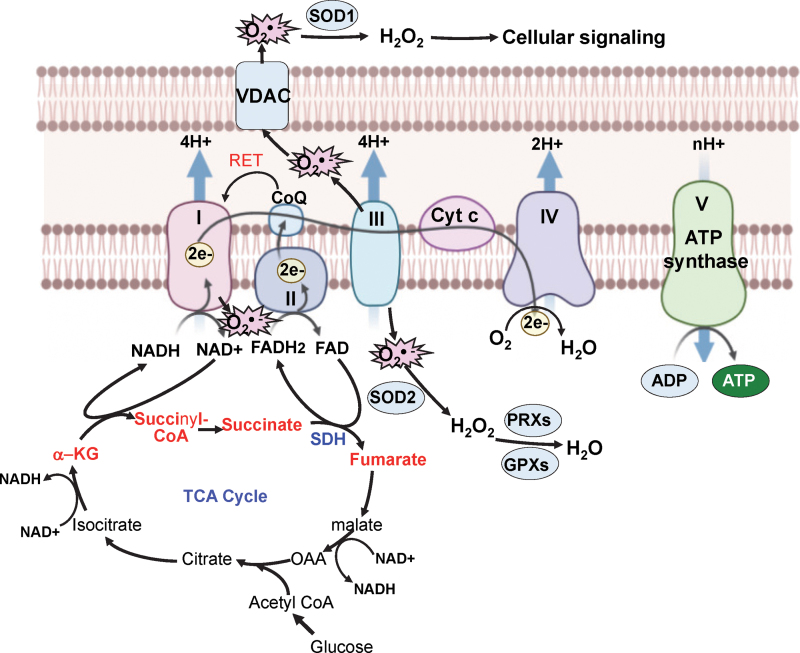FIG. 3.
Interplay between mitoROS production, the ETC, and the TCA cycle. mitoROS are produced by the ETC at complexes I and III during oxidative phosphorylation. The reducing equivalents NADH and FADH2, which are generated by the TCA cycle in a series of enzymatic reactions, transfer electrons to the ETC to produce ATP. Thus, mitoROS, the ETC, and the TCA cycle are closely connected during oxidative phosphorylation. When the pool of CoQ is reduced, mitoROS are produced by complex I via RET. Further, VDACs control the release of O2•− from the mitochondria to the cytosol. NADH is produced during the conversion of α-α-KG to succinyl CoA to provide electrons for complex I in the ETC. NADH is also produced in the conversion of isocitrate to α-KG and the conversion of malate to OAA in the TCA cycle. FADH2 is produced during the conversion of succinate to fumarate via the actions of SDH, which is an enzyme that participates in both the TCA cycle and the ETC. α-KG, α-ketoglutarate; CoA, coenzyme A; complex I, NADH–ubiquinone oxidoreductase; complex III, ubiquinol–cytochrome c oxidoreductase; coQ, coenzyme Q; Cyt c: cytochrome c; FADH2, reduced flavin adenine dinucleotide; NADH, nicotinamide adenine dinucleotide; OAA, oxaloacetate; RET, reverse electron transport; SDH, succinate dehydrogenase; VDAC, voltage-dependent anion channel. Color images are available online.

